Christmas Bird Count Report
Audubon's 2021 Christmas Bird Count (CBC) is ending soon, and our chapter’s two CBCs for this year are complete. The Clay County East CBC occurred on December 18th, and the Jacksonville count was Saturday, December 26th.
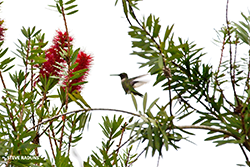 Clay County East compiler Steve Raduns reports that 26 volunteers participated in the December 18th count and recorded 104 different species for the day, including a rare (for this time of year) Northern Parula and Ruby-throated Hummingbird. Other standout species observed during the Clay CBC were: King Rail, Virginia Rail, Sora, White-throated Sparrow and Grasshopper Sparrow. Unfortunately, he says, “There has been a significant amount of habitat loss to the Clay County East CBC circle since last year primarily from construction of the new highway that is passing through the county. There is also a lot of new home construction being built because of this new toll highway.” His team was also prevented from surveying a normally fantastic wading bird rookery site by a wild hog hunting party with many ATVs and hunting dogs converging on the property. Despite the loss of this key location, his team still managed to get 77 species for the day.
Clay County East compiler Steve Raduns reports that 26 volunteers participated in the December 18th count and recorded 104 different species for the day, including a rare (for this time of year) Northern Parula and Ruby-throated Hummingbird. Other standout species observed during the Clay CBC were: King Rail, Virginia Rail, Sora, White-throated Sparrow and Grasshopper Sparrow. Unfortunately, he says, “There has been a significant amount of habitat loss to the Clay County East CBC circle since last year primarily from construction of the new highway that is passing through the county. There is also a lot of new home construction being built because of this new toll highway.” His team was also prevented from surveying a normally fantastic wading bird rookery site by a wild hog hunting party with many ATVs and hunting dogs converging on the property. Despite the loss of this key location, his team still managed to get 77 species for the day.
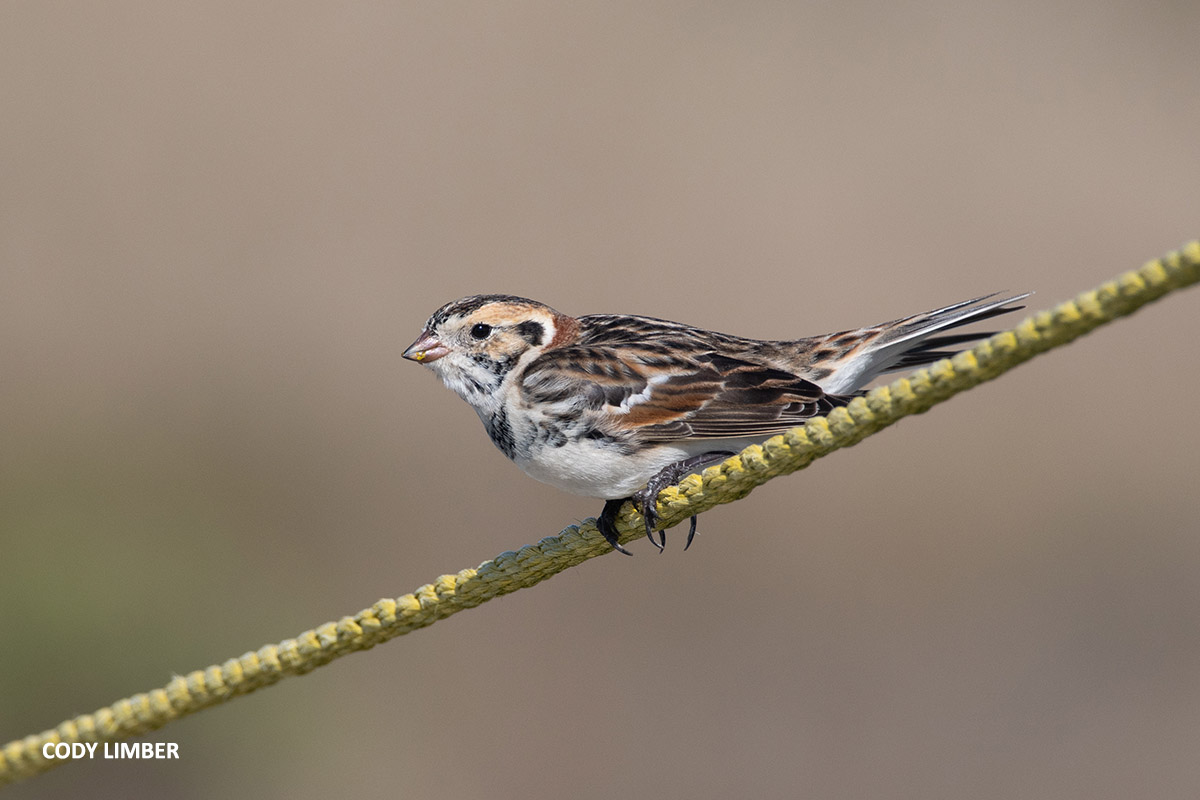 Jacksonville CBC compiler Anne Turner tells us that more than 50 volunteers participated in the count this year, an impressive number considering it was held on the day after Christmas! 157 species were reported for the count, two more than last year, even though several species seen last year were missed this year. The star species of the day was a Lapland Longspur, a bird that breeds in the High Arctic and typically migrates to the central and far western US during non-breeding season. This bird was first spotted at Huguenot Memorial Park on December 10th by Doris and Pat Leary and was subsequently seen by multiple local birders until mid-December, when it seemed to disappear from the area. Luckily, it reappeared for the Christmas Bird Count and was spotted by Bill George’s team during their survey at Huguenot.
Jacksonville CBC compiler Anne Turner tells us that more than 50 volunteers participated in the count this year, an impressive number considering it was held on the day after Christmas! 157 species were reported for the count, two more than last year, even though several species seen last year were missed this year. The star species of the day was a Lapland Longspur, a bird that breeds in the High Arctic and typically migrates to the central and far western US during non-breeding season. This bird was first spotted at Huguenot Memorial Park on December 10th by Doris and Pat Leary and was subsequently seen by multiple local birders until mid-December, when it seemed to disappear from the area. Luckily, it reappeared for the Christmas Bird Count and was spotted by Bill George’s team during their survey at Huguenot.
Other notable species seen during the Jacksonville CBC were: Western Tanager, Nelson’s, Saltmarsh, Seaside, and White-crowned Sparrows, Piping Plovers, Whimbrels, and 12 different species of ducks.
Both counts were blessed with incredible weather, which makes the long day (pre-dawn to dusk for many participants) so much more pleasant. Many thanks to everyone who volunteered their time and energy to participate in the 122nd Audubon Christmas Bird Count this year. CBC observations help Audubon scientists track bird populations over time, aid in the development of strategies to protect birds and their habitats, and help to identify environmental issues with implications for people as well. Check back with us in the fall of 2022 for information about next year’s count.
Audubon's Climate Watch Program
Audubon’s 2019 “Survival by Degrees” report documented the alarming conclusion of many years of ornithological and climate research: fully two-thirds of North American bird species are at risk of extinction due to climate change. Many species will see their ranges shift as the climate warms and human development reduces suitable breeding habitat. Soon, some species may have nowhere left to go.
As a result of the report, Audubon initiated several new programs and website features, including their Birds and Climate Visualizer page, which allows you to type in your zip code and see how climate change is predicted to affect the birds that live in your local community.
 Audubon’s Climate Watch Program began after an earlier Audubon report published in 2014 on the impact of climate change on North American birds and has become even more critical since the 2019 report. This community science project aims to test the predictions in the report with volunteers who are documenting specific species’ responses to climate change in their local areas. Climate Watch volunteers survey bird species targeted by Audubon based on climate models and ease of detection. The program is currently focusing on bluebirds, nuthatches, painted bunting, and two species of goldfinch and towhee.
Audubon’s Climate Watch Program began after an earlier Audubon report published in 2014 on the impact of climate change on North American birds and has become even more critical since the 2019 report. This community science project aims to test the predictions in the report with volunteers who are documenting specific species’ responses to climate change in their local areas. Climate Watch volunteers survey bird species targeted by Audubon based on climate models and ease of detection. The program is currently focusing on bluebirds, nuthatches, painted bunting, and two species of goldfinch and towhee.
Participants survey the target birds in their chosen areas during thirty-day periods in the winter non-breeding season (January 15 through February 15) and/or in the summer breeding season (May 15 through June 15). To facilitate participation at the local level, Audubon set up a grid of 10 x 10 km Climate Watch Squares that cover the USA. There are multiple ways to participate, but the simplest is to volunteer as an individual and report your findings to the national Climate Watch team.
You can learn more about how to participate in Audubon’s Climate Watch Program as an individual by reviewing the information here and by reading Audubon’s Climate Watch FAQs.
It is also possible to participate as a local coordinator for a specific area. Climate Watch coordinators manage their area’s participation in Climate Watch by recruiting participants, training them to plan and conduct Climate Watch surveys, and ensuring that the data they collect are submitted to the national Climate Watch team. Our chapter doesn’t currently have a local Climate Watch coordinator, so if you are interested learning more about what’s involved with this role, please review this information to find out more about how to participate as a Climate Watch coordinator.
As Audubon says, “The data collected by our dedicated Climate Watch volunteers are already helping us to tell the story of the birds we love, aiding in our understanding on how these birds are responding to climate change.” If you would like to find out more about becoming a Climate Watch individual volunteer or coordinator in our area, please contact the Audubon Climate Watch Team at This email address is being protected from spambots. You need JavaScript enabled to view it..
Homegrown National Park
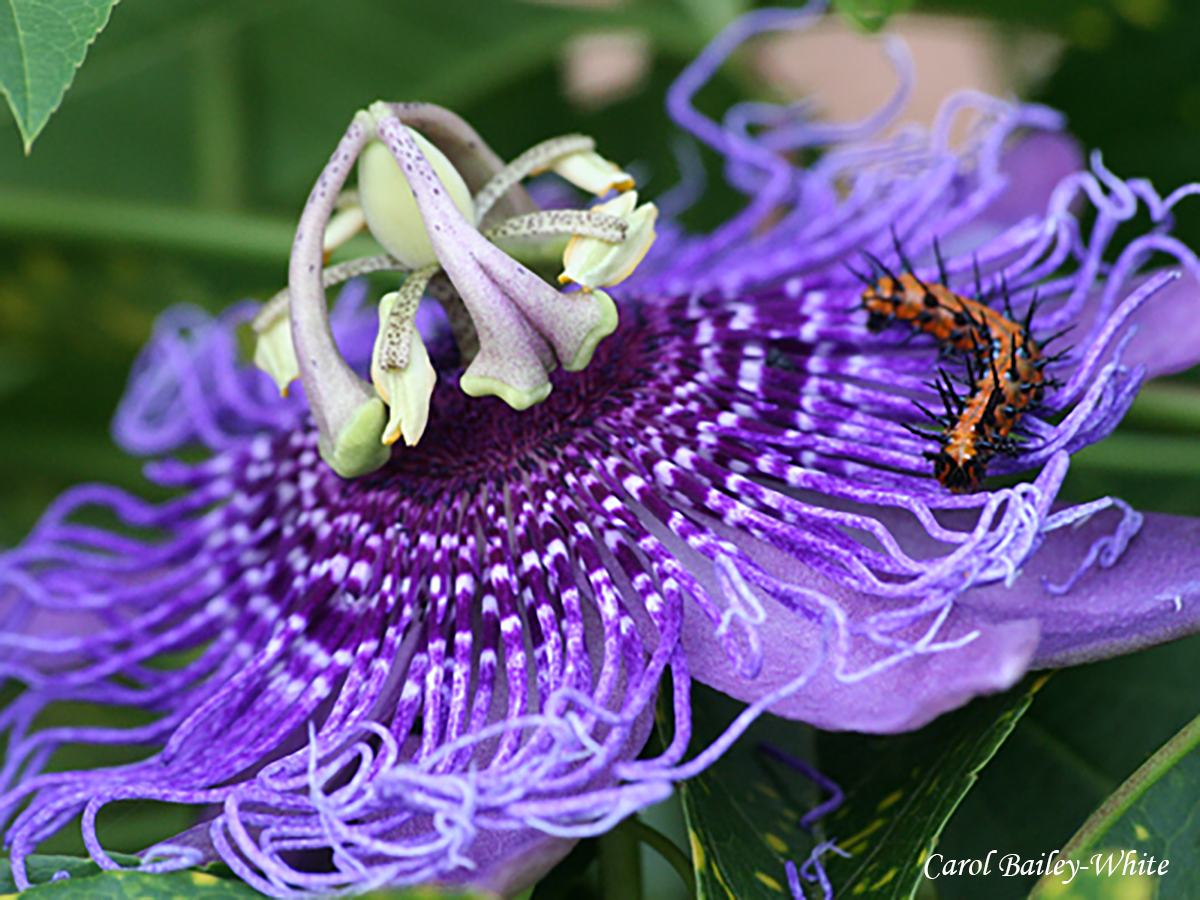 By now most of us have heard about the “insect apocalypse,” an alarming decline in insect populations around the world. Scientists point to multiple causes, including climate change, habitat loss, the use of toxic pesticides, and the proliferation of non-native plants in our landscape.
By now most of us have heard about the “insect apocalypse,” an alarming decline in insect populations around the world. Scientists point to multiple causes, including climate change, habitat loss, the use of toxic pesticides, and the proliferation of non-native plants in our landscape.
Why should we care? In a study published in 2019 by the journal Science, the North American continent has lost over 3 billion birds since 1970, a loss of nearly 30% of the total bird population. One of the factors contributing to this decline is the reduction in overall insect biodiversity. Many bird species rely on insect protein to feed their growing nestlings, and with less insects available, fewer birds are surviving to adulthood.
And the insect apocalypse will affect people as well, as insects are a major pollinator of food crops. They also aerate the soil our food is grown in and assist in the decomposition of organic matter and soil enrichment. Many insects also provide pest control services by preying on harmful bugs that can damage crops as well as home gardens.
 Clearly, this reduction in insect biodiversity has ominous implications for the future of life on our planet. That’s why Professor Doug Tallamy of the University of Delaware has made it his mission to create a “Homegrown National Park” by encouraging home gardeners to regenerate biodiversity by planting native plants and removing invasive plants in their home landscape. Even planting just a few native plants in your yard can support pollinators and provide important food sources for native birds raising their young. You can find out what native plants are beneficial for birds in your area with Audubon's Plants For Birds online database.
Clearly, this reduction in insect biodiversity has ominous implications for the future of life on our planet. That’s why Professor Doug Tallamy of the University of Delaware has made it his mission to create a “Homegrown National Park” by encouraging home gardeners to regenerate biodiversity by planting native plants and removing invasive plants in their home landscape. Even planting just a few native plants in your yard can support pollinators and provide important food sources for native birds raising their young. You can find out what native plants are beneficial for birds in your area with Audubon's Plants For Birds online database.
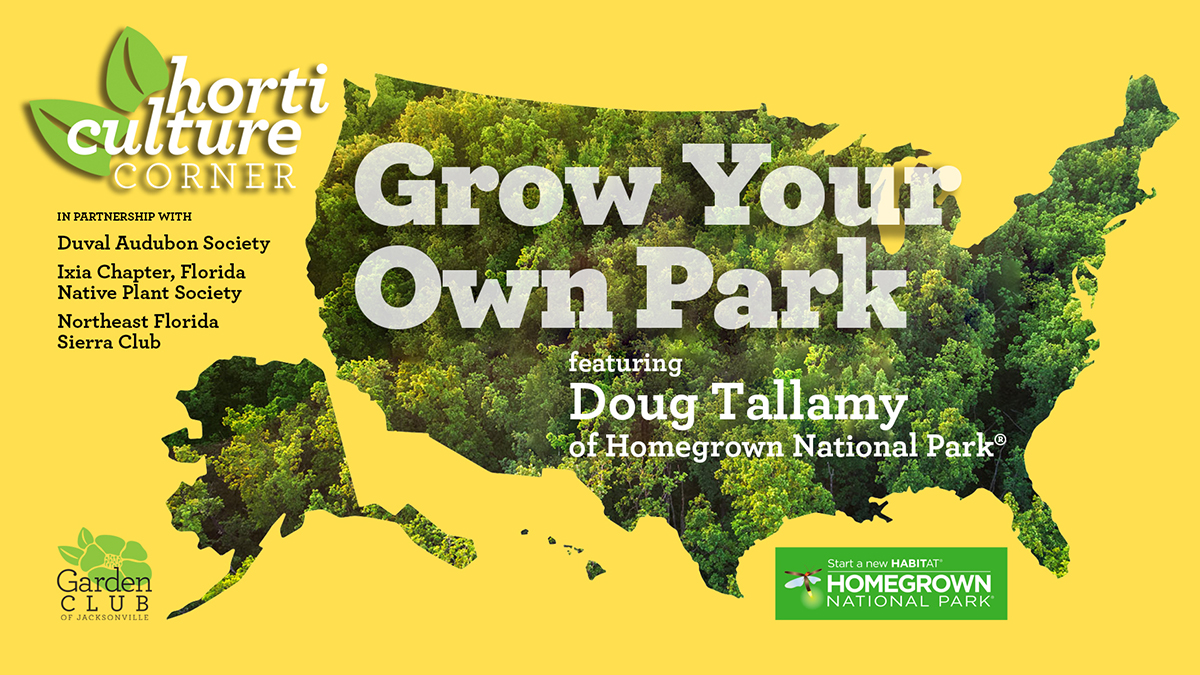 We are thrilled to partner with the Ixia Chapter of the Florida Native Plant Society, Sierra Club Northeast Florida, and the Garden Club of Jacksonville to present a special “Grow Your Own Park” program to encourage Northeast Florida gardeners to plant natives in their landscape and sign up their yards for the Homegrown National Park challenge. Dr. Tallamy will join us via Zoom to talk about the Homegrown National Park project, followed by an in-person introduction to easy-to-grow native plants. A selection of native plants will be available for sale at the event as well as books on native plant gardening, plus lots of free information to help you go native and grow your own park.
We are thrilled to partner with the Ixia Chapter of the Florida Native Plant Society, Sierra Club Northeast Florida, and the Garden Club of Jacksonville to present a special “Grow Your Own Park” program to encourage Northeast Florida gardeners to plant natives in their landscape and sign up their yards for the Homegrown National Park challenge. Dr. Tallamy will join us via Zoom to talk about the Homegrown National Park project, followed by an in-person introduction to easy-to-grow native plants. A selection of native plants will be available for sale at the event as well as books on native plant gardening, plus lots of free information to help you go native and grow your own park.
Please join us at 5:30 pm on Thursday, March 3, 2022, at The Garden Club of Jacksonville for this exciting event! This program is free, but advance registration is required in order to attend. We look forward to seeing you there!
Great Backyard Bird Count
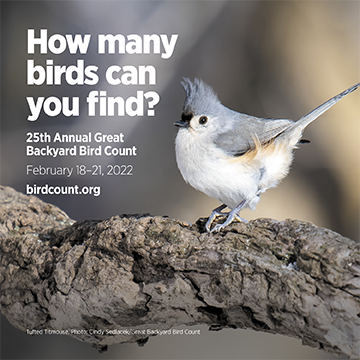 The Great Backyard Bird Count (GBBC) is an annual four-day event that engages bird watchers of all ages and skill levels in counting birds to create a real-time snapshot of bird populations. Participants are asked to count birds for as little as 15 minutes (or as long as they wish) on one or more days of the event and report their sightings online.
The Great Backyard Bird Count (GBBC) is an annual four-day event that engages bird watchers of all ages and skill levels in counting birds to create a real-time snapshot of bird populations. Participants are asked to count birds for as little as 15 minutes (or as long as they wish) on one or more days of the event and report their sightings online.
Sponsored by the Cornell Lab of Ornithology, the National Audubon Society, and Birds Canada, the GBBC has become a worldwide phenomenon, with estimates of more than 300,000 bird watchers around the world participating last year and contributing close to 380,000 bird observations. These observations help scientists better understand global bird populations and movements, and lay the groundwork for effective strategies to protect them and the environments they (and we!) rely on for survival.
This year’s GBBC runs from Friday, February 18 through Monday, February 21, and you can participate by simply watching birds in your backyard or at your favorite nature getaway. If you already have an eBird account, simply submit your sightings as you normally do, and they will automatically be included in the GBBC data. If you’re new to birding, download the Merlin Bird ID app to your phone and use it to help you identify the birds you see, then submit your sightings on the app (here’s how!)
The GBBC website has lots more information about how to participate in the count, whether you are a novice birdwatcher or an expert (or somewhere in between!) They are also hosting a GBBC Webinar at 2 pm (EST) on Wednesday, February 16, so please join the webinar to brush up on bird ID, unlock the mystery of bird songs, and practice counting birds no matter how large the flock or how busy the feeder. The webinar is free, but you will need to register to participate.
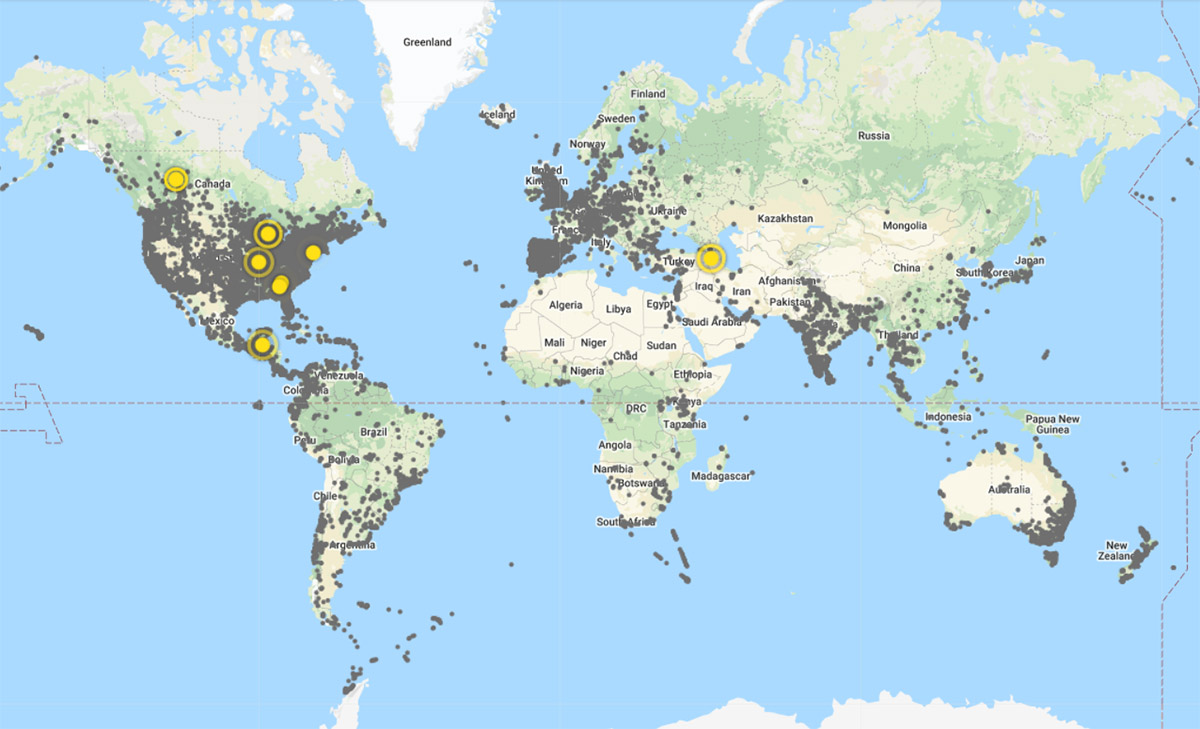 Another fun feature of the GBBC website is the bird observations map, where you can watch as bird observation checklists are submitted from all around the world, in real time! The map is up and running right now, but it’s especially fun to watch the checklists coming in fast and furious during the four days of the GBBC.
Another fun feature of the GBBC website is the bird observations map, where you can watch as bird observation checklists are submitted from all around the world, in real time! The map is up and running right now, but it’s especially fun to watch the checklists coming in fast and furious during the four days of the GBBC.
Finally, consider joining us at 8 am on February 19 at our Crosby Sanctuary conservation property in Orange Park for our Nature Walk and Volunteer Workday. Sanctuary director Pete Johnson will lead the nature walk and submit our GBBC group checklist from the walk. Even if you can’t stay for the workday, you are welcome to join us for the nature walk. We do ask that you register in advance on our Meetup site so we know how many to expect.
Wherever you are that weekend, we hope you will join the fun and participate in the 25th Annual Great Backyard Bird Count!
Page 1 of 3
-
Urgent Request to Members and Supporters
by Pete Johnson, Acting President
 Duval Audubon is the only conservation organization that has been established in Duval County since 1939. Yes, that’s 85 years this year! The chapter has changed a lot over the years, but the core mission has stayed the same, to celebrate and conserve our amazing bird diversity in Northeast Florida. Our official mission is “Connecting People with Nature, conserving and restoring natural ecosystems, focusing on birds and other wildlife.” We continue to do this for our membership and the community, but we need your help.
Duval Audubon is the only conservation organization that has been established in Duval County since 1939. Yes, that’s 85 years this year! The chapter has changed a lot over the years, but the core mission has stayed the same, to celebrate and conserve our amazing bird diversity in Northeast Florida. Our official mission is “Connecting People with Nature, conserving and restoring natural ecosystems, focusing on birds and other wildlife.” We continue to do this for our membership and the community, but we need your help.As many of you know by now, previous chapter president Carol Bailey-White stepped down last year after 3 years as president and 10 years of serving on the board in various other capacities. She is still dedicated to our chapter and continues to volunteer with our website and social media outlets. We were excited when new president Rich Egan came on board for the 2023-2024 year. However, he resigned after a few months for personal reasons and was not able to continue leading our organization.
That’s where I stepped in as Acting President through the remainder of the 2023-2024 term. As Vice President and long-time director of Crosby Sanctuary, it was my responsibility to take on this role. However, my career obligations are very demanding, and I have a limited capacity to continue in this position. We need someone with the time and energy to devote to our chapter to step up and submit an application to be President. We have a great group of Board Members to support you. It’s a manageable role that anyone can reasonably do.
Preferably, we are looking for someone who is retired or works part-time and has a little more time to devote than someone working full time. However, we are not limiting the field if the right candidate wishes to step up. I’ll even volunteer to stay on as Vice President for the first year to provide support.
We have position descriptions available for review. Please, if you have any interest just contact us at This email address is being protected from spambots. You need JavaScript enabled to view it. and request a position description for review.
You can This email address is being protected from spambots. You need JavaScript enabled to view it. and/or apply using our online application form (a paper form is also available if you prefer). Thank you!
-
Having Your Voice Heard
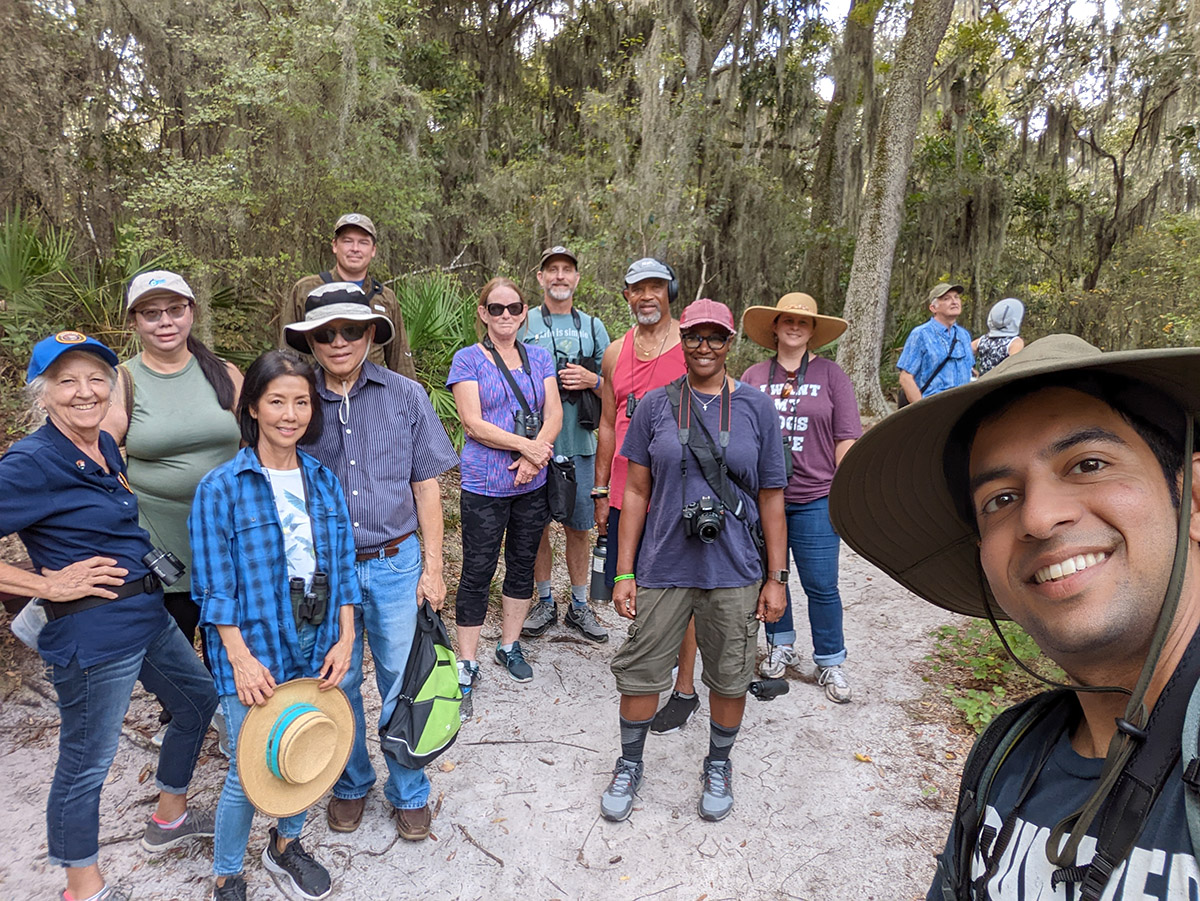 Your membership in Duval Audubon strengthens our messages to the public and government leaders. The more members we have, the more effective our voices for birds and bird habitat will be. Education about conservation issues is an important part of our work. Help us amplify our messages. Your membership means a better community for people and birds and other wildlife. Join today and help make Duval, Clay and Nassau better places for all creatures to live.
Your membership in Duval Audubon strengthens our messages to the public and government leaders. The more members we have, the more effective our voices for birds and bird habitat will be. Education about conservation issues is an important part of our work. Help us amplify our messages. Your membership means a better community for people and birds and other wildlife. Join today and help make Duval, Clay and Nassau better places for all creatures to live.Unsure of your membership status? Reach out to our membership director Christine Lucas at This email address is being protected from spambots. You need JavaScript enabled to view it..
-
Upcoming Activities
Here's what's happening this month:
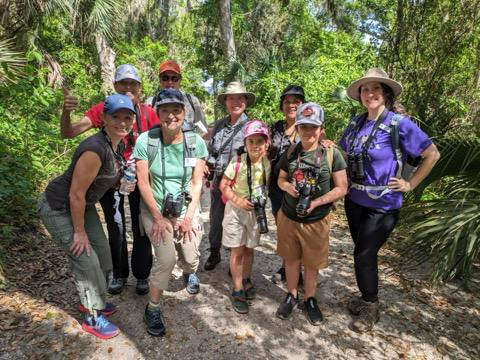 Urban Birds with Duval Audubon & St. Johns Riverkeeper @ Riverview Park: 7:30 - 9 am, Sunday, May 5, 2024 (register here)
Urban Birds with Duval Audubon & St. Johns Riverkeeper @ Riverview Park: 7:30 - 9 am, Sunday, May 5, 2024 (register here)- Bird Walk for Beginners @ Fort Caroline National Memorial: 9 - 11 am, Sunday, May 5, 2024 (register here)
- eBird's Global Big Day @ your favorite birding spot(s): All day, Saturday, May 11, 2024 (learn more)
- Nature Walk and Work Day @ Crosby Sanctuary: 8 am - 12 pm, Saturday, May 18, 2024 (more info here)
- Monthly Program: "Avian Influenza Update" @ Southeast Regional Library: 6:30 - 8:30 pm, Monday, May 20, 2024 (more info here)
- Bird Walk for First-Time Birders @ Hanna Park: 7:30 - 10 am, Saturday, May 25, 2024 (register here)
- Open House @ Crosby Sanctuary: 8 am - noon, Saturday, May 25, 2024 (no registration needed)
We look forward to seeing you soon!
